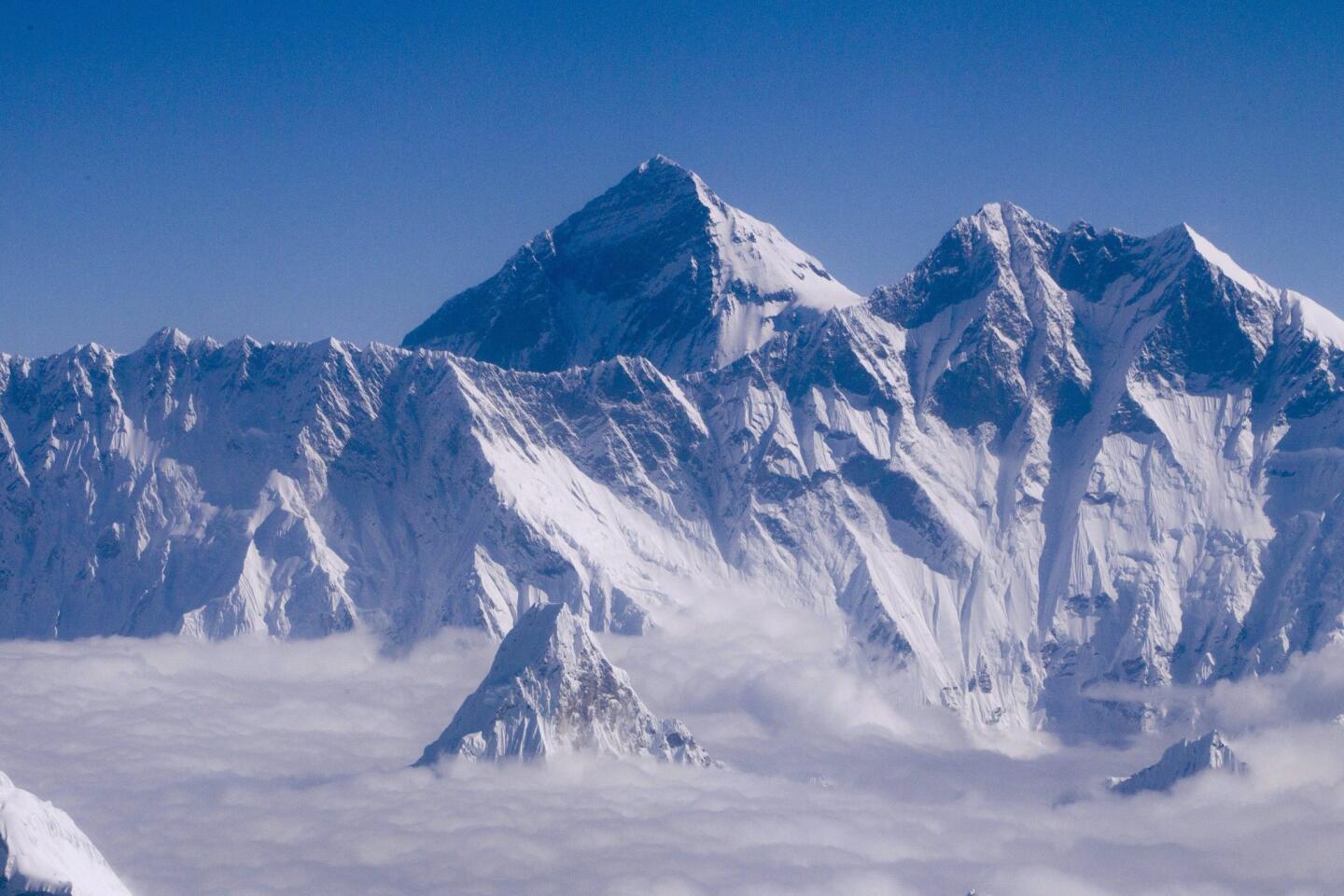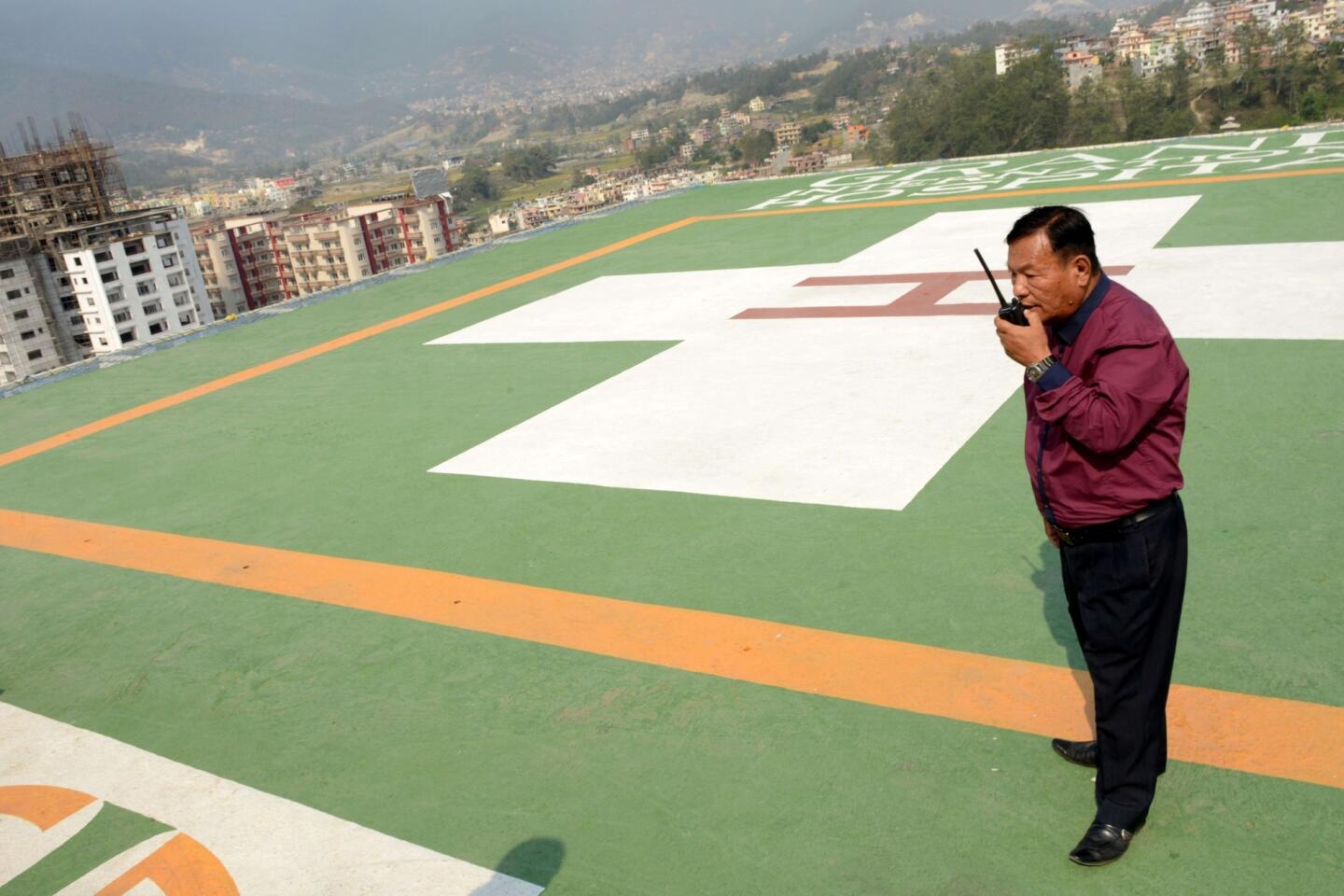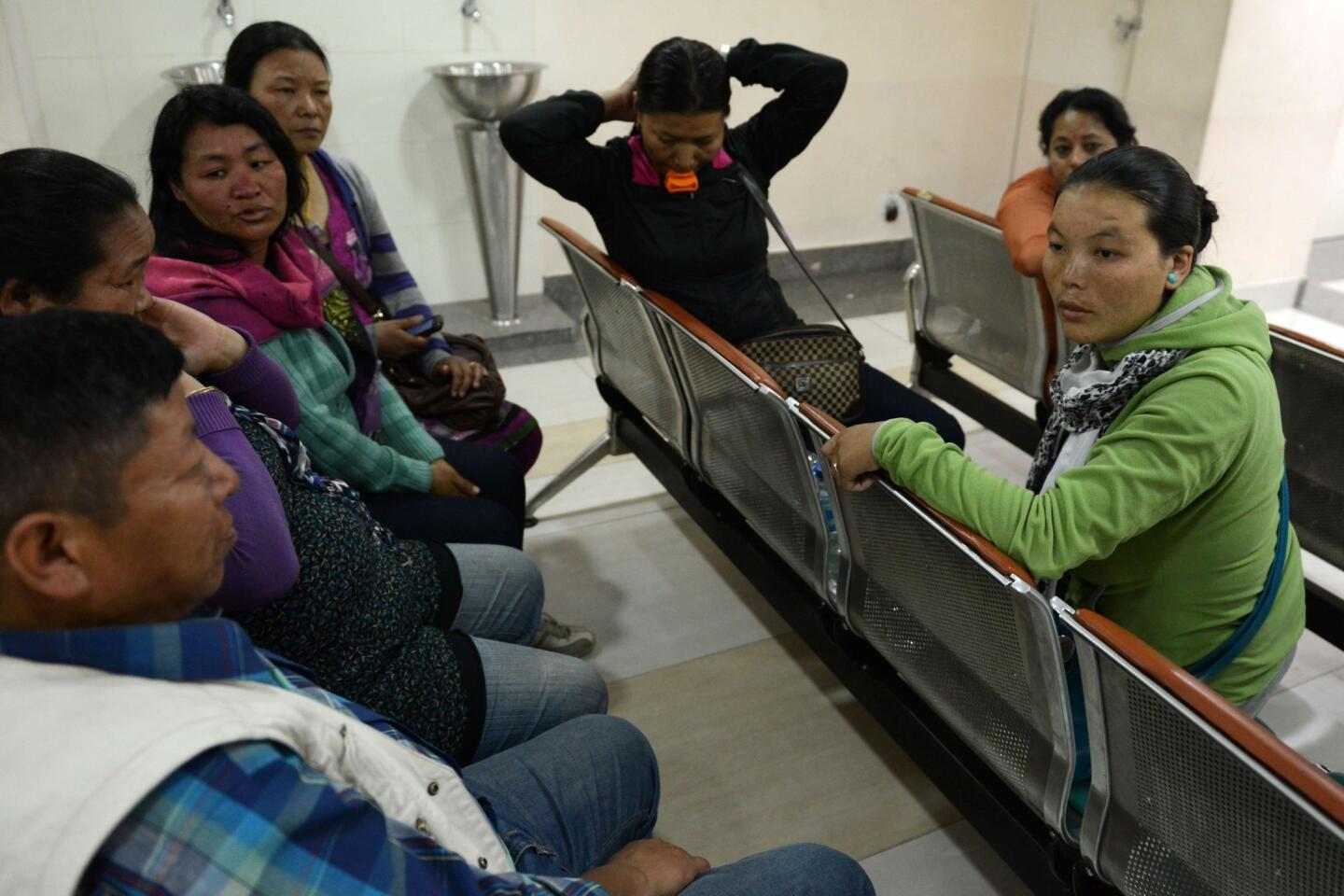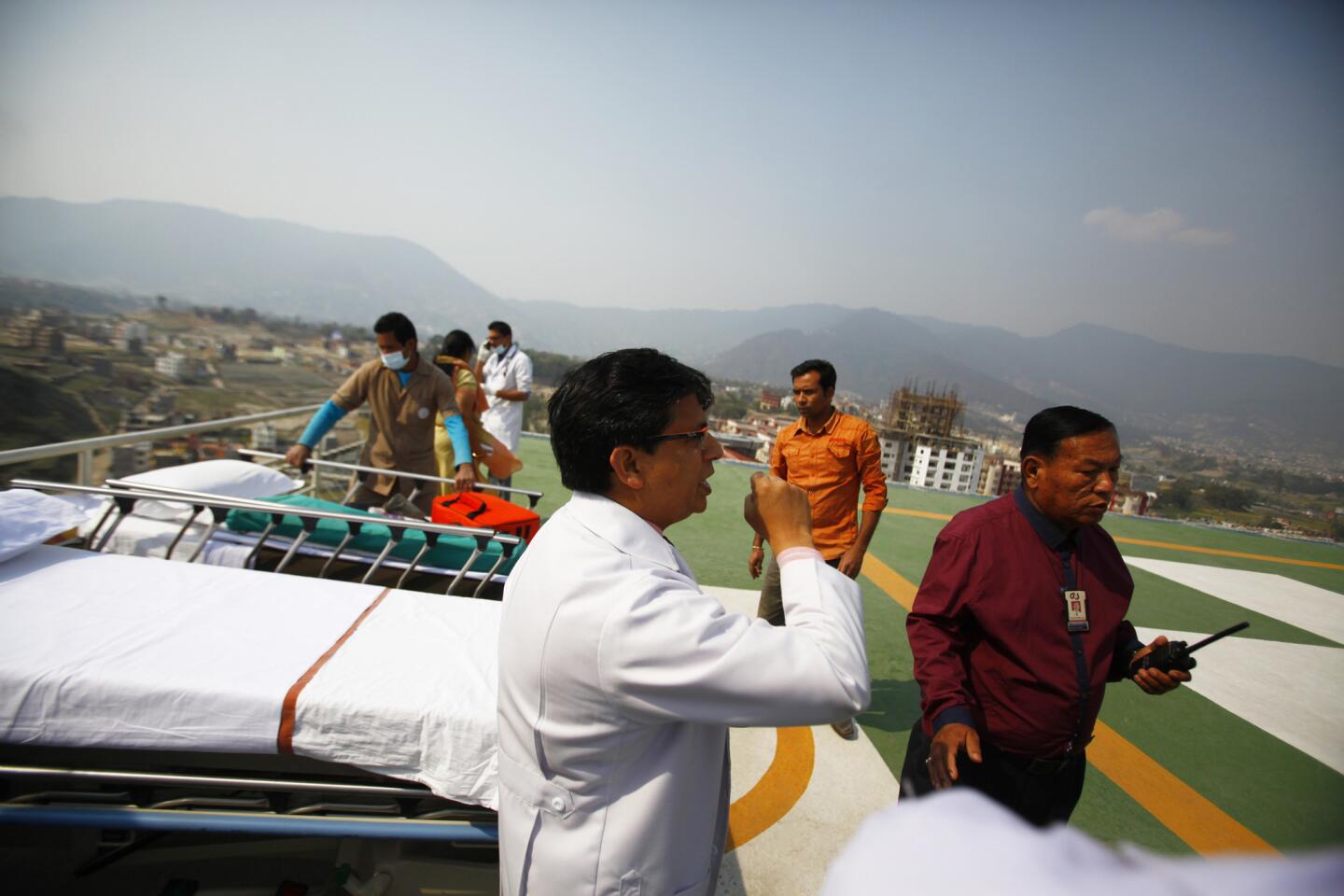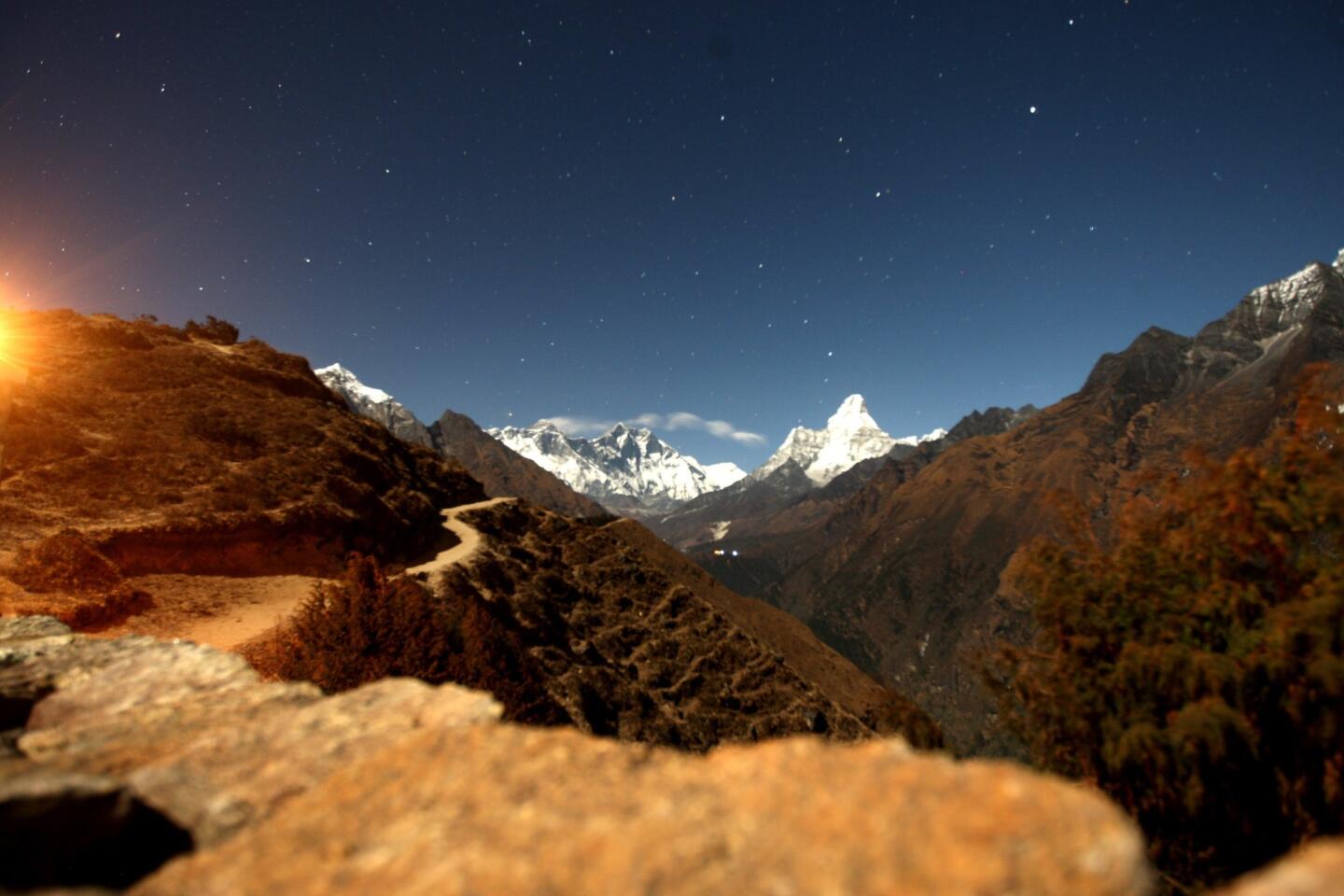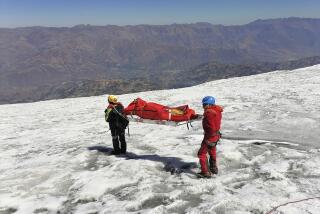Opinion: Climbing Everest shouldn’t just be an item on someone’s bucket list
- Share via
Four days after the deadliest avalanche in Mt. Everest’s history took the lives of 13 Sherpa mountaineers (with three others presumed dead under the ice), most of the Nepalese guides and porters say they will abandon the mountain in honor of the fallen.
By packing up before the season even begins, the tight-knit Sherpa community has in effect canceled the expeditions of hundreds of foreign mountaineers in base camp. All while the Nepalese government negotiates with the Nepal National Mountain Guide Assn. over a list of demands, including immediate financial assistance to the victims’ families, improved insurance and rescue coverage for mountain workers, and a park in Kathmandu memorializing the victims.
In recent days the prospect of a boycott had divided Sherpas torn between respecting the deceased and protecting their livelihoods. (For an in-depth look at the risks, economics and ethical dilemmas involved, browse no further than Outside magazine senior editor Grayson Shaffer’s superb 2013 feature, “The Disposable Man”.) A protest in the works for next month in Kathmandu suggests that Sherpa leaders are digging in for lengthy negotiations.
Whether reforms come this season or next, nothing can eliminate the risk of working in one of the world’s harshest environments. But a few key changes could ensure that Sherpas are risking only their own lives, not the security of loved ones who depend on their courageous work.
Some veteran climbers worry that funding reforms by raising fees for permits and expeditions will only exacerbate safety concerns by pricing out skilled professionals and leaving a mountain full of wealthy thrill-seekers. Yet as Shaffer reports, a $200 policy could more than double the meager insurance coverage Sherpa mountaineers currently receive. Additional taxes or fees could help improve educational opportunities in the region to ensure that Sherpas are choosing the mountain life by choice, not out of economic necessity.
Yet as much as the safety nets need to be strengthened, the romanticized Western notion of the Everest explorer needs to be put to rest. In the six decades since Edmund Hillary and Tenzing Norgay first reached the 29,029-foot summit, the feat has steadily devolved from bold conquest to adventure tourism. In 2013, 658 climbers and guides summited Everest. It took 41 years for the first 658 to climb it.
Now the climb has turned into an increasingly dangerous dare. Who can do it without oxygen? Without ropes? Who can be the oldest to summit? The youngest? Who can make the climb with the least help from Sherpas? (Last year, conflicts over mountain etiquette led to a bloody conflict between Sherpas and European climbers at 21,000 feet.) Consider that in just a few weeks, Joby Ogywn had been scheduled to BASE jump from the summit. That’s how high the bar is these days to do something truly monumental on this mountain, and that’s how audacious foreign adventurers have become, turning this sacred peak into a staging ground for televised extreme sports.
No matter how daring these stunts become, at the end of the day, the vast majority are achieved on the backs of the Sherpas who lay the groundwork. During commemoration of the 60th anniversary of the first Everest summit, esteemed climber Reinhold Messner told a crowd at the British Embassy in Kathmandu: “Climbers who cross ladders set by Sherpas at the Khumbu Icefall, then go up without ropes and claim to be special, are parasites.”
Don’t get me wrong: It must feel pretty amazing to be that kind of parasite. I imagine it’s quite the life to have the physical wherewithal (and pocketbook) to climb the world’s tallest mountain and feel like “King of the World” or whatever.
But Everest is more than an item on a bucket list. It’s a heritage site central to the spiritual life of an entire region. For better or worse, it’s also become irrevocably entwined with that region’s economy. And though most climbers are good people who show due respect to the mountain and its people, at the end of the day, they are contributing to an industry that puts Sherpas at enormous risk of death, potentially tearing entire families apart for the sake of a personal journey.
How can we encourage sustainable mountaineering in the Himalayas and elsewhere that feeds the human need for adventure while also valuing the lives of the people who consider these beautiful parts of the world their ancestral homes? Until we can answer that question, climbers will have to own up to the reality that climbing Everest and other extreme mountains is akin to going on safari: extremely privileged people proving their bravery by undertaking an ethically, politically and environmentally fraught expedition.
ALSO:
In AT&T’s U-verse world, faster may not necessarily be better
USC student protest: Did the school really have to call their parents?
From ‘Late Night’ to Google: Are talented women their own worst enemy?
Chris Feliciano Arnold is a recipient of a 2014 Literature Fellowship from the National Endowment of the Arts. He has written essays and journalism for the Atlantic, Salon, the Millions, the Rumpus and Los Angeles Review of Books. Follow him on Twitter @chrisarnold.
More to Read
A cure for the common opinion
Get thought-provoking perspectives with our weekly newsletter.
You may occasionally receive promotional content from the Los Angeles Times.

